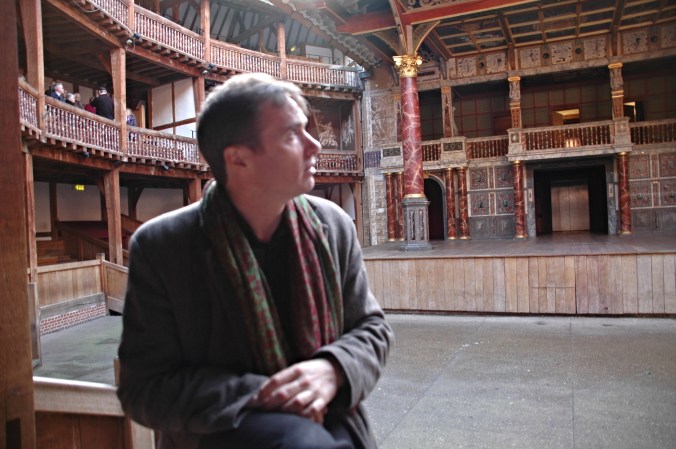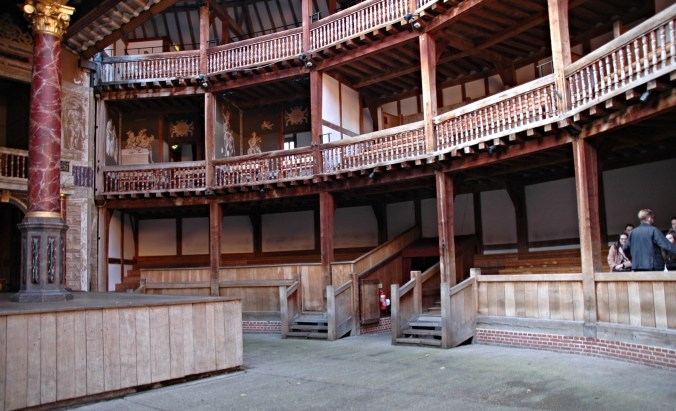This is a Dharma Talk I gave in September 2011 at the Won Temple in Philadelphia.

Good morning, everyone. It gives me great pleasure and joy to see your smiling faces here this morning. I am right, happy, humble, and proud to be here today. I always say that before I give a talk, mainly because I just like the way it sounds. It has just the right amount of ironic intensity, and audaciousness to it to suit my temperament and my purposes. I am happy to be here, because at my age, well, I am happy to be anywhere. I am humble, because as a Buddhist, this is an important quality that is highly desirable and most difficult to attain, and I strive for it every day. A Zen Master once said, “Enlightenment can come only after humility – the wisdom of realizing one’s own ignorance, insignificance, and lowliness, without which one cannot see the truth. But, I am also proud, because it is an honor sit here before you and share my story with you and I have a sense of appreciation for being here with you. This might sound like a contradiction, but as Walt Whitman once said: “I contradict myself? Very well, I contradict myself. I am large, and I contain multitudes.”
I come here today, seeking refuge. I seek refuge in the Buddha, the dharma and the sangha; the sangha is the third jewel in the triple crown of my Buddhist practice. I also come here today seeking the truth; the truth about myself, the truth about others, and the truth about the universe.
Let me tell you a little bit about my journey. I first started studying Buddhism back in 1975. I was baptized a Catholic, raised in a military family and attended non-denominational Christian Churches and attended Sunday school every week. I was baptized again when I was 13 in the Disciples of Christ Church. When I was 15, I started having serious doubts about Christianity and asked a lot of questions in my Sunday school classes; questions that could not easily be answered. So the church leaders put me in advanced classes with older students. The kept moving me up until I was in the adult group and I finally shut up which was what they wanted me to do. It was soon after that I left the church and began my long journey and quest for the truth. I became an atheist. I studied philosophy. I encountered the existentialists and embraced the philosophy of John Paul Sartre and Albert Camus, who said, “In a universe suddenly divested of illusions and light, man feels an alien, a stranger.” This philosophy spoke to me like nothing else I had ever encountered and it resonated deeply within me, for I had always felt like a stranger in a strange land. But yet, something was still missing. I kept searching. Then, while taking a circus class in juggling, the teacher required us to purchase a book for the class called, Zen and the Art of Archery. This was my first encounter with Buddhism. I was fascinated. I read another book, Zen Buddhism, by D.T. Suzuki. I kept on reading everything I could get my hands on, and thus started a lifetime of study. When I first learned about Zen Buddhism, it was like someone turned on a light in a darkened room. At last I could see.
One of the early lessons I learned in Buddhism was to empty my mind. There is a famous story of a Zen master who received a university professor who came to him to learn about Zen. The master served tea. He poured his visitor’s cup full and then kept on pouring. The professor watched the cup overflow until he could no longer stand it. “ No more will go in,” he said. “It is overfull.” “Like this cup, the master said, “ you are full of your own opinions and ideas. How can I show you Zen, unless you first empty your cup?”
Another famous Zen Master, Shunryu Suzuki writes, “…for Zen students, the most important thing is not to be dualistic. Our original mind includes everything within itself. If your mind is empty, it is always ready for anything. In the beginner’s mind there are many possibilities; in the expert’s mind there are few.
I have been attending the Philadelphia Temple for several years now. But, as many of you know, I don’t live in Philadelphia. I live in Trenton, New Jersey. Someone asked me the other day why I lived in Trenton. Trenton seems like the sort of town you move away from, not move to. I had to agree, that was true, and one of these days, believe me, I am going to put that whole town in my rear view. But for now, it is home. How I got to Trenton is a story in itself. You see, I used to live in Philadelphia. Then I met my partner, Mary. Mary couldn’t be here today, because she had to go back to Puerto Rico to be with her family, but she sends her regards and she is thinking about you. Mary lived in New York when I first met her and we started dating. We had one of those long distance relationships. I have always been in love with long distance. One weekend Mary would come to Philadelphia and the next weekend I would go to New York. It was sort of a tale of two cities. After about a year of this back and forth, we decided to meet in the middle. If you look at a map, you will see that Trenton is about half way between New York City and Philadelphia. While we were in New York we started looking for a place to practice Buddhism. I was a long time practitioner, but Mary was just beginning. We did an internet search and found the Won Temple in Manhattan and began attending services. After we moved to Trenton a few years ago, we started attending the Philadelphia Temple. And lo and behold who should we see when we walked through the door? Min Ju, who we had first met at the Manhattan Temple. We were so happy, we knew this was the place for us. Now Min Ju is gone and we miss her, but we are happy to be here as part of this Sangha and it is really gratifying to see how the Sangha has grown and sustained itself.
Mindfulness
What I want to talk to you about today is a subject that I have the most difficulty with. And I hope by talking about it, I can learn something too. And that subject is mindfulness. Living mindfully is one of the most important things we can do as a Buddhists in terms of being happy, peaceful, and joyful. But for me it is one of the most difficult. I know how to be mindful. I simply concentrate on the present moment and focus on my breathing. I pay particular attention to what I am doing and become very aware of my actions and the environment. The problem is, during the course of the day I find I am in my head so much, I don’ always know that I am not being mindful until something happens to bring me up short like making a mistake, or dropping something ,or having a minor accident. I usually give myself hell when this happens and say to myself, now if you were paying attention and were being mindful, that wouldn’t have happened. So the trick is to be mindful, 24/7. Every breath we take, every step we make can be filled with peace, joy, and serenity. We only have to be awake, alive, and fully present in the moment. You can do this by conscious breathing. Breathing in I say to myself, “I am breathing in, breathing out I say to myself, “I am breathing out.” Sometimes you have to talk to yourself. When I arise in the morning, I think to myself, I am a Buddha, may I rid myself of the three poisons of greed, hatred, and ignorance. Destructive emotions will arise, but I will not give in to them. Today, I will read the texts and reflect on their meaning and develop wisdom. I will generate altruistic intention to become enlightened and compassionate. I will be here now…and participate in the miracle of mindfulness.
We can walk like a Buddha. Walking is an important form of Buddhist meditation. Step out and touch the earth in such a way that you establish yourself in the present moment. You will arrive in the here and now. While walking, practice conscious breathing by counting steps. Notice each breath and the number of steps you take as you breathe in and as you breathe out. Always start with your breathing. If you don’t start with your breathing, your thinking will settle back in and the bird or the tree will disappear.
When we practice walking mediation, we arrive in each moment. When we enter the present moment deeply our regrets and sorrows disappear and we discover life with all its wonders. Breathing in we say, “I have arrived,” breathing out we say, “I am home.”
People say that walking on water is a miracle, but I say walking peacefully on the earth is the real miracle.
Non – Duality
Now, I would like to talk to you a little bit about sitting mediation and the idea of non-duality. It is said that practice should be without gaining ideas, without speculation, even without enlightenment. This does not mean, however to sit with no purpose. To sit without ideas is based on the Prajna Paramita Sutra. Form is emptiness, emptiness is form. But, if you become attached to this idea, this is a form of dualism. Here is your form, here is your emptiness, which you are trying to realize through your form. So form is emptiness and emptiness is form is still dualistic. Our teaching goes on to say, form is form and emptiness is emptiness. Here there is no duality. When you find it difficult to stop your mind while you are sitting, and while you are trying to stop your mind, this is the stage of form is emptiness and emptiness is form. But, while practicing in this dualistic way more and more, you will have oneness as your goal. When your practice becomes effortless, you can stop your mind. This is the stage of form is form and emptiness is emptiness.
Japanese Zen Master Dogen said, “All phenomena are mind. Mind is all. Mind contains rivers, mountains, moon and sun.” Nagarjuna said, “All phenomena can be said to be in two categories: mind and matter. On the conceptual level we distinguish mind and matter, but on the level of awakening, all is mind. Mind is matter, matter is mind. Matter does not exist outside of mind. Mind does not exist outside of matter. Each is in the other. This is called the non-duality of mind and matter.” When we discriminate between subject and object we are separated from the principle of non-duality. Reality is represented by this circle. If we divide the circle into two parts A and B, that would represent mind and matter, subject and object. But, as you can see, the circle contains them both and they are unified. We are one, we are whole. The circle represents non-duality and we call it Dharmkaya. A Zen master said, “Before practicing Zen, rivers were rivers and mountains were mountains. When I practiced Zen I saw that rivers were no longer rivers and mountains were no longer mountains. Now I see that rivers are again rivers and mountains are again mountains.”
Four Horses
One of my favorite Zen stories is the one about the four horses. It is said that there are four kinds of horses: excellent ones, good ones, poor ones, and bad ones. The best horses will run even in the shadow of the whip. The second best will run as well as the first just before the whip reaches its skin. The third kind will run when it feels the pain on its body. The fourth will run after the pain penetrates to the marrow of it bones. You can well imagine how difficult it must be for the fourth one to learn how to run. I have misunderstood this story for years. It is only just recently that I have begun to understand it a little. I have always wanted to be the first horse; to run in the shadow of the whip. That was pride messing with my head. In fact, I was fond of saying from time to time, when the time was right and it seemed apropos, “…a good horse runs even in the shadow of the whip,” thinking I was imparting some great wisdom to my listener about whips, and timing and reflex action. However, it seems that I completely missed the point of the story.
You may think that when you are sitting on that meditation cushion you will discover what kind of horse you are. But if you think the purpose of meditative practice is to become one of the best horses, this is an incorrect understanding. If you practice Zen in the right way, it doesn’t matter if you are the best horse or the worst horse. When you consider the mercy of the Buddha, how do you think Buddha would feel about the four horses? He will have more sympathy for the worst one that for the best one. When you are determined to meditate with the great mind of Buddha, you will find the worst horse is most valuable. According to Suzuki, those who sit perfectly usually take more time to obtain the way, or the marrow of Zen, but those who find great difficulties, in practicing, will find more meaning in it. So sometimes the best horse may be the worst horse and the worst horse may be the best. This is the point of the story. Even though you are the worst horse you will get to the marrow of Zen. Turns out, there is hope for me yet.
In Zen, poetry and practice always go together. I would like to close by sharing a poem or a chant by Tina Turner from an album she recently released called, Beyond.
Beyond, by Tina Turner
Nothing last forever, no one lives forever, the flower that fades and dies, winter passes and springs comes. Embrace the cycle of life, that’s the greatest love.
And from me: Live every day. It would be a mistake not to.
Now I would be happy to facilitate a conversation or try to answer any questions. I don’t claim to have any special knowledge or expertise. In fact, the more I study, the more I realize how little I know. I know I know not, but I also know I am going to try to find out.
Gassho







 The lotus flower pure and fragrant is unsullied by the muddy water in which it grows. It symbolizes the beauty and dignity of our humanity that is brought forth from the sufferings of daily reality. The fruit of the lotus plant develops simultaneously with the flower. When the flower opens, the fruit is there within it. This illustrates the principle of the simultaneity of cause and effect. The principle of the simultaneity of cause and effect clarifies that our lives are fundamentally equipped with the great life state of the Buddha and that the attainment of Buddhahood is possible by simply opening up and bringing forth this state.
The lotus flower pure and fragrant is unsullied by the muddy water in which it grows. It symbolizes the beauty and dignity of our humanity that is brought forth from the sufferings of daily reality. The fruit of the lotus plant develops simultaneously with the flower. When the flower opens, the fruit is there within it. This illustrates the principle of the simultaneity of cause and effect. The principle of the simultaneity of cause and effect clarifies that our lives are fundamentally equipped with the great life state of the Buddha and that the attainment of Buddhahood is possible by simply opening up and bringing forth this state.